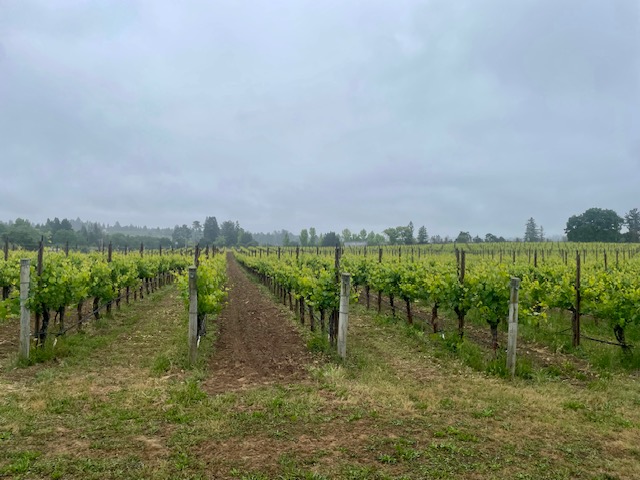Vineyard Update
We have experienced a cooler than normal yearso far. The signature fog that often blankets the Russian River Valley has been a persistent feature to the landscape this year. With lower temps that have struggled to get into the 80’s this year, the timing of harvest is delayed about three weeks later than what we have been accustomed to in recent years. The cooler weather could lead to an exceptional year in quality and would only be a concern if the weather in September into October continues with the lower-than-normal trend.

Foggy morning in the Russian River Valley
As a winemaker in the Russian River Valley, I prefer this cooler weather as opposed to experiencing extreme heat waves that have plagued us in the past. The most recent one being just last year where temperatures reached 116F in the first week of this month. The biggest advantage of this cool pattern is the increased hang time for the grape clusters to slowly ripen on the vines. This slow ripening creates intense aromas and flavors and serves to deepen the complexity of resulting wines.

Pinot Noir cluster, through veraison enjoying the morning sun.
Our anticipation is building for the upcoming harvest, I expect to see grapes coming into the winery around the twentieth of this month. Most vineyards I have visited are on very similar trajectories. This means that once harvest starts it’s going to be a sprint to the finish line to get everything in before the grapes pass the “peak” of ripeness, and the quality starts to decline.

Chardonnay clusters, enjoying the morning sun.
Leading up to harvest I enjoy getting out into the many different vineyards we source fruit from that need repeated visits. So far, the visits are visual inspections looking at overall vine health and vine balance. I look for any sign of disease, insect damage, and the quantity of grapes on the vines. Identifying any of these conditions early gives us the opportunity to remedy them before the quality of the harvest is affected.
As we get into September, we will start to sample the grapes during these visits. I’ll walk the vineyard pulling cluster samples that will be taken back to the lab and analyzed for sugar and acidity levels. Sugar increases during the ripening phase and has a direct impact on the wines resulting alcohol level. Acidity decreases as the grapes ripen and has a direct impact on the wine’s stability and structure. We monitor sugar and acid weekly leading up to harvest as they provide us with the insight needed to create a wine of balance and precision.

Pinot Noir crushed and waiting for analysis in the laboratory.
As important as analysis is, it’s just part of the picture. The grapes must taste good to! I look for ripe flavors and ripe seeds among other things. It’s the winemakers’ job to assess all aspects of the vintage and make the call for the perfect time to harvest the precious grapes!
As always, we’re going into harvest this year with a sense of gratitude. On behalf of the entire team here at Ron Rubin Winery, we wish you all continued good health!








